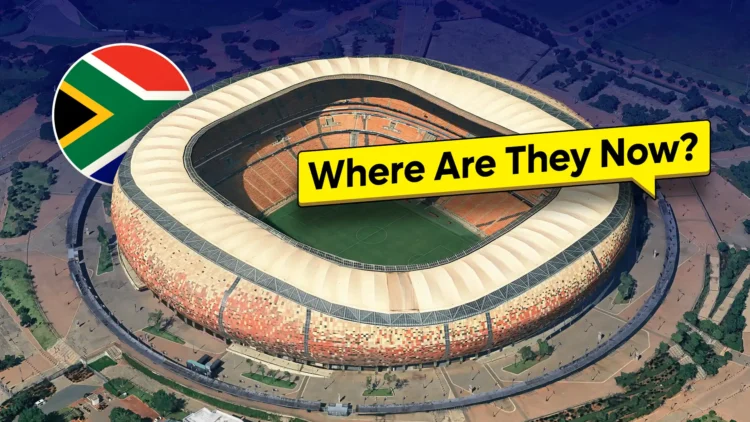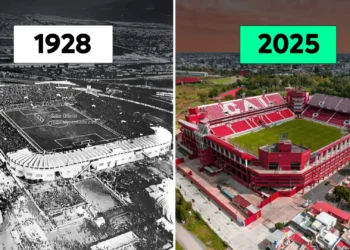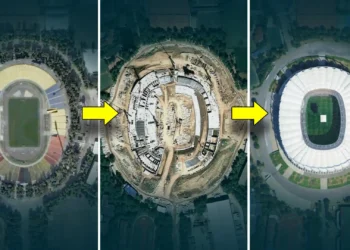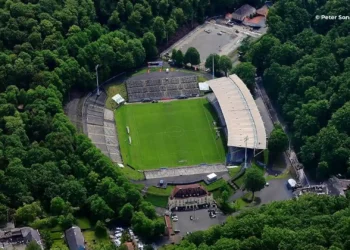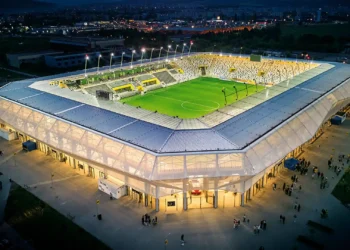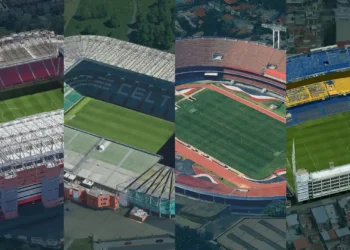When South Africa hosted the 2010 FIFA World Cup, it became the first African nation to stage football’s biggest tournament. Ten stadiums were either newly built or extensively renovated to meet FIFA standards.
The ambition was not just to host a successful event, but also to create a sustainable sports infrastructure that would serve the country for decades.
Over a decade later, the legacy is mixed: some venues thrive as multi-purpose arenas, others struggle with limited use and financial strain.
Stadium-by-Stadium Breakdown
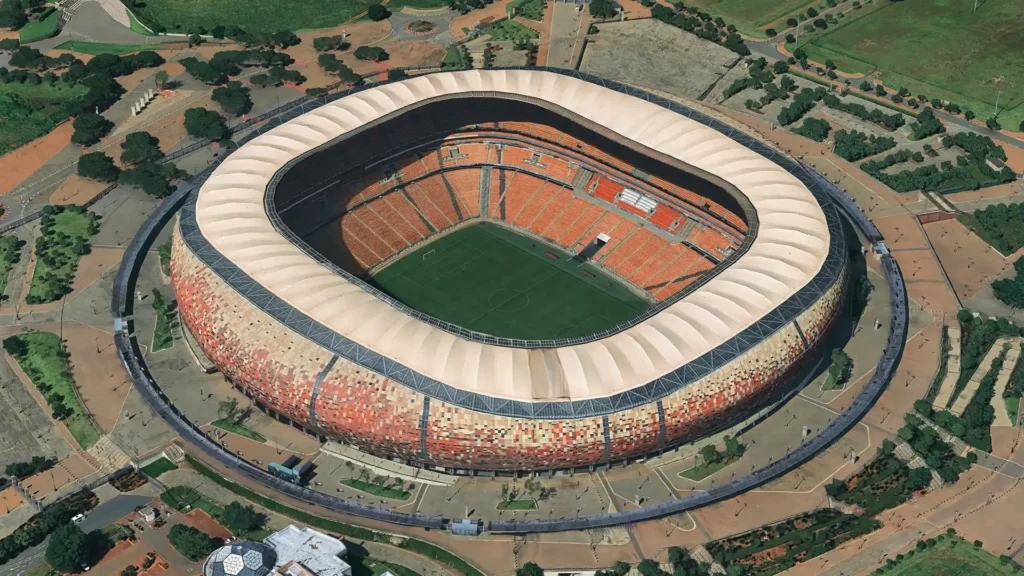
1. Soccer City (FNB Stadium) – Johannesburg
Status: Thriving
- The jewel of 2010, Soccer City remains South Africa’s premier stadium.
- Hosts Kaizer Chiefs matches, Bafana Bafana internationals, major cup finals, and mega concerts.
- Capacity of 94,000 ensures it remains the go-to venue for national spectacles.

2. Cape Town Stadium (Green Point) – Cape Town
Status: Active and versatile
- After early struggles, it reinvented itself as a multi-purpose venue.
- Home to rugby giants DHL Stormers and Western Province, plus concerts (U2, Justin Bieber, etc.) and exhibitions.
- Also a popular tourist attraction thanks to its location near the Waterfront.
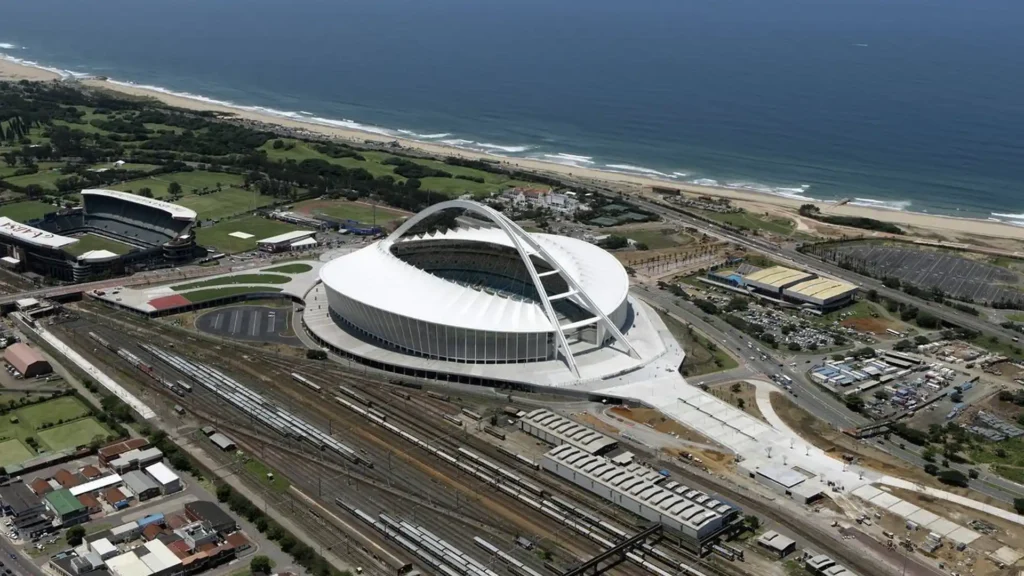
3. Moses Mabhida Stadium – Durban
Status: Diversified use
- Known for its iconic arch and skycar attraction.
- Hosts AmaZulu FC matches, cultural events, and concerts.
- Tourism activities (bungee jumps, stadium tours) help offset operating costs.
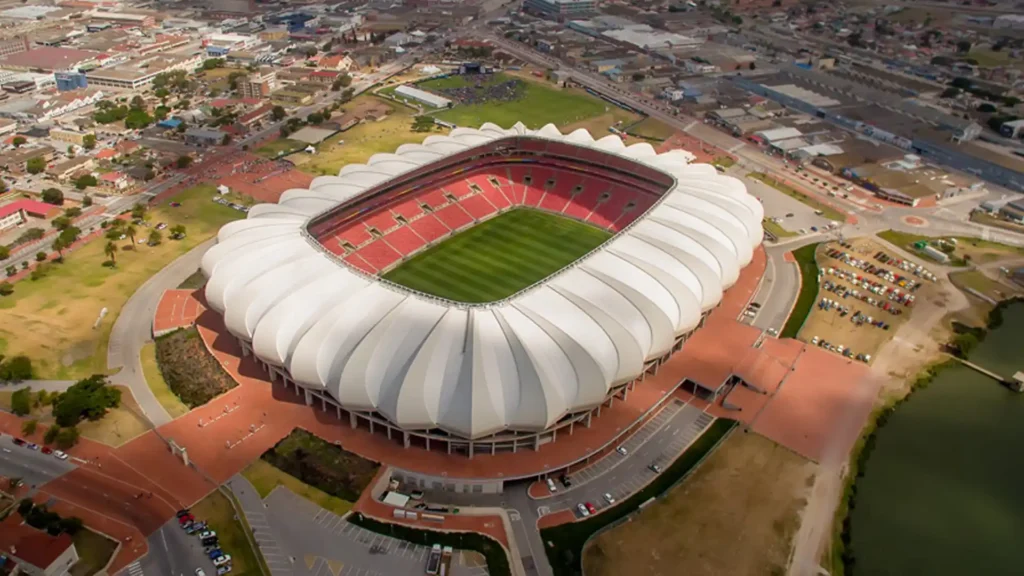
4. Nelson Mandela Bay Stadium – Port Elizabeth (Gqeberha)
Status: Moderate usage
- Hosts Chippa United matches (Premier Division) and rugby events.
- Recently refurbished to position itself as an “events hub.”
- Still faces challenges filling its 46,000 capacity regularly.
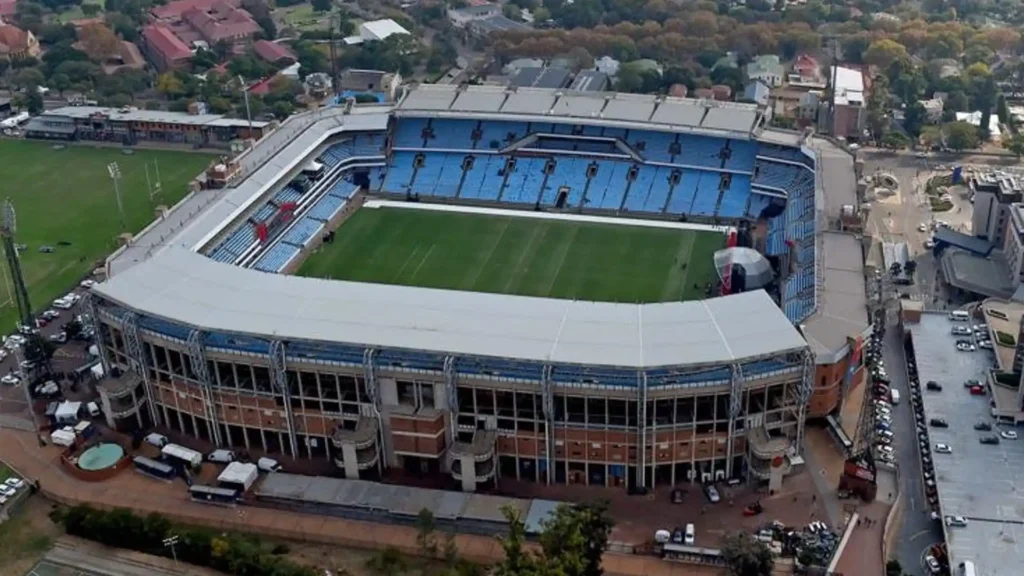
5. Loftus Versfeld Stadium – Pretoria
Status: Consistently used
- Historic rugby and football ground long before 2010.
- Home to Blue Bulls (rugby) and Mamelodi Sundowns (football).
- Smallest 2010 venue (42,000) but among the busiest.
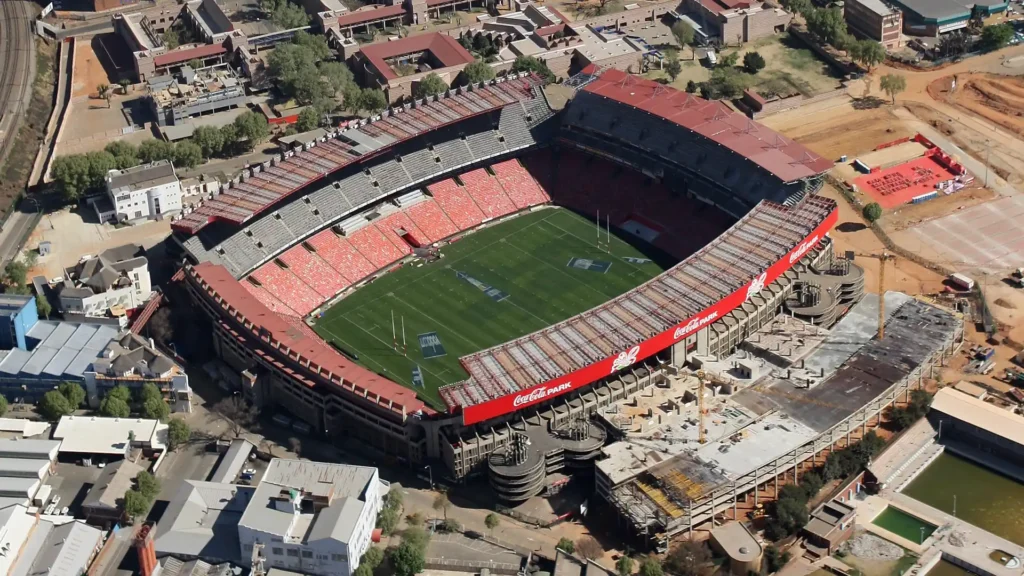
6. Ellis Park Stadium – Johannesburg
Status: Strong legacy
- Legendary rugby venue, famous for the 1995 Rugby World Cup.
- Still hosts Lions rugby matches, concerts, and football.
- Continues to be one of the country’s most important stadiums.
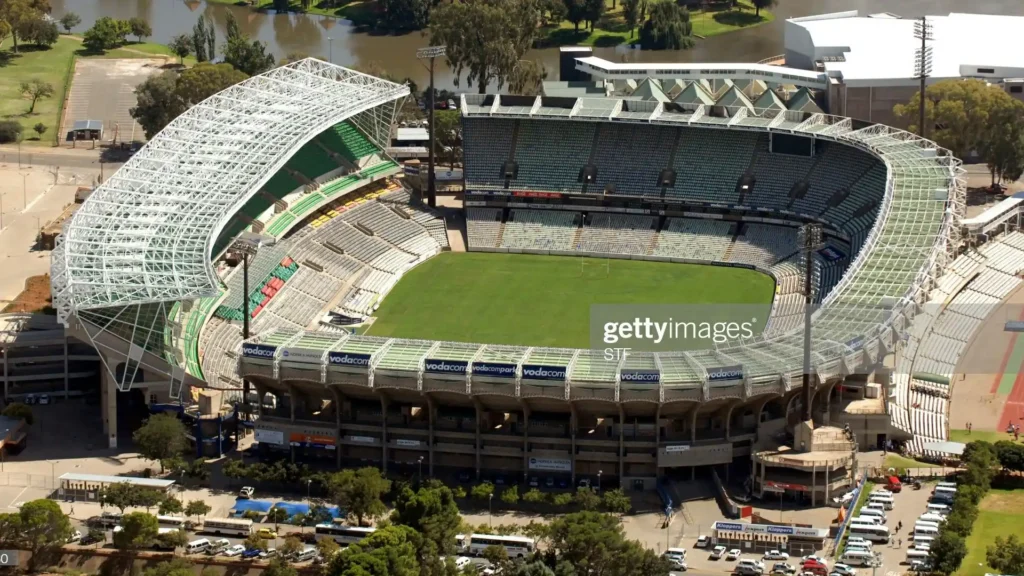
7. Free State Stadium – Bloemfontein
Status: Stable but limited
- Used mainly for rugby (Cheetahs) and football (Bloemfontein Celtic in the past, now Royal AM occasionally).
- Not as many large-scale events, but remains an active community hub.
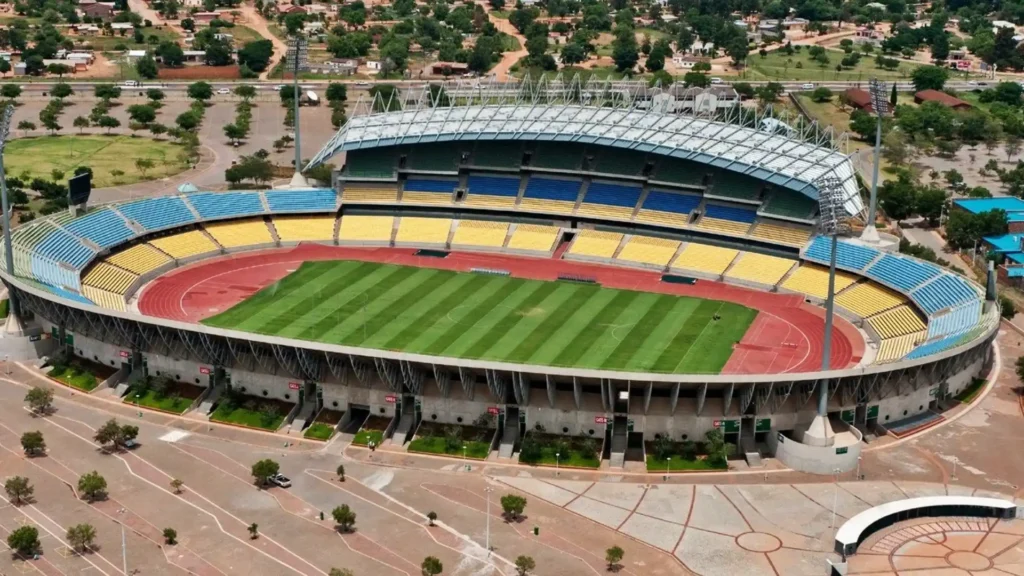
8. Royal Bafokeng Stadium – Rustenburg
Status: Functional but quieter
- Owned by the Royal Bafokeng Nation.
- Hosts regional football, rugby, and occasional concerts.
- Not as busy as major metro stadiums, but still in use.
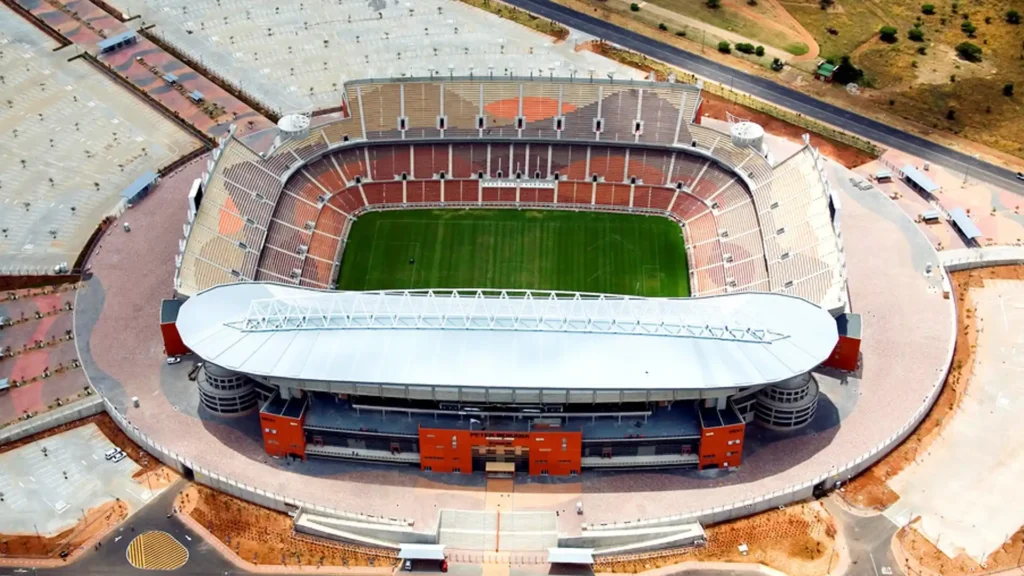
9. Peter Mokaba Stadium – Polokwane
Status: Underused
- Built brand new for 2010 with a striking Baobab tree-inspired design.
- Occasionally hosts football matches but lacks a strong permanent tenant.
- Faces sustainability issues due to low demand.
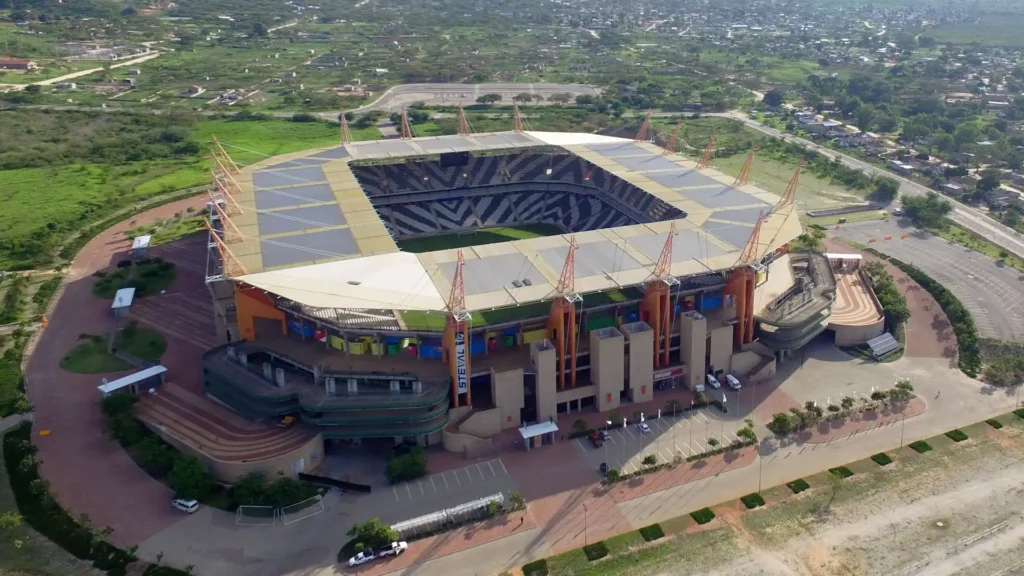
10. Mbombela Stadium – Nelspruit (Mpumalanga)
Status: Underutilized
- Known for its giraffe-inspired roof columns.
- Occasionally hosts rugby and football matches.
- Location in a smaller city limits consistent use, leading to high maintenance challenges.
Winners and Losers
- Thriving stadiums: Soccer City, Cape Town Stadium, Loftus Versfeld, Ellis Park.
- Moderately active: Moses Mabhida, Nelson Mandela Bay, Free State, Royal Bafokeng.
- Struggling: Mbombela and Peter Mokaba — lack of anchor clubs and smaller markets leave them vulnerable to underuse.
South Africa 2010 remains a historic milestone, both for African football and for FIFA. The stadium legacy, however, reflects the same lesson as other World Cups:
Stadiums tied to strong clubs, multiple sports, and diversified events thrive. Those built without long-term anchors risk becoming financial burdens.
The dream of 2010 lives on in South Africa’s biggest cities, but some stadiums in smaller regions continue to search for purpose more than a decade later.

